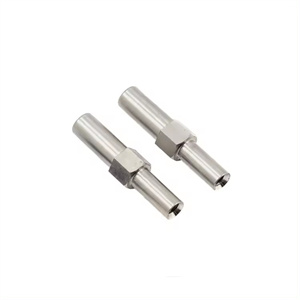Pipe Tubes turning is a precision machining process for tubular parts. Advantages of pipe turning processing:
High precision molding: It can achieve high-precision size control of the inner and outer diameters of pipe fittings, ensuring geometric accuracy such as roundness and cylindricity of the pipes.
Excellent surface quality: By turning, a smooth and burr free surface of the pipe fittings can be obtained, improving their wear resistance and sealing performance.
Applicable pipe fitting types:
Metal fittings: such as stainless steel pipes, copper pipes, aluminum pipes, etc.
Pipe Tubes turning process:
Clamp positioning: Use appropriate fixtures to ensure that the pipe fittings are firmly fixed on the lathe without damaging the surface of the pipe fittings.
Tool selection: Based on the material, size, and processing requirements of the pipe fittings, choose suitable turning tools, such as outer circle turning tools, inner hole turning tools, etc.
Cutting parameter setting: Reasonably set cutting speed, feed rate, and cutting depth to improve machining efficiency and quality.
Key points for quality control of Pipe Tubes turning machining:
Size measurement: Use measuring tools such as calipers, micrometers, plug gauges, etc. to accurately measure the size of pipe fittings.
Appearance inspection: Check for defects such as scratches, dents, and cracks on the surface of the pipe fittings.
Application scenarios for Pipe Tubes turning processing:
Automobile manufacturing industry: used to manufacture oil pipes, gas pipes, and other pipe fittings for automobiles.
Plumbing industry: producing various types of water pipe connectors.
Aerospace field: Processing of pipe fittings for aircraft hydraulic and fuel systems.
CNC Turning is a turning method achieved through computer numerical control (CNC) technology.
Working principle: CNC Turning uses pre programmed instructions to control the movement of the lathe, including spindle rotation, workpiece feed, and cutting tool movement. These instructions are issued through the computer control system to guide the machine tool to process according to the predetermined path and speed.
Application areas: CNC Turning is widely used in the manufacturing industry, especially in industries that require high-precision and high-efficiency processing, such as automotive manufacturing, mold manufacturing, aerospace, medical equipment, etc. It can process various shapes of shaft and disc parts, such as inner and outer cylindrical surfaces, conical surfaces, threads, grooves, etc.
Advantages:
High precision: CNC Turning can achieve micrometer level machining accuracy through precise programming and control systems, meeting the needs of high-precision manufacturing.
High efficiency: CNC Turning achieves automated processing, reduces manual intervention and downtime, greatly improving production efficiency.
Strong flexibility: CNC Turning can easily adapt to the processing of workpieces of different shapes and sizes, with only the need to modify the processing program.
High consistency: Due to the use of computer control, CNC Turning can ensure the consistency and repeatability of processing.
Machine Tool Composition: CNC lathes are usually composed of three main parts: computer control system, execution system, and machine tool body. The computer control system is responsible for issuing control commands, while the execution system is responsible for executing these commands, including spindle drive, workpiece feed, and cutting tool movement. The machine tool body provides the mechanical structure and cutting tools required for processing.
Programming and operation: CNC Turning requires operators to have certain programming and machine operation skills. The operator needs to write a machining program, set machining parameters, and monitor the operation status of the machine tool. In addition, the maintenance and upkeep of CNC machine tools also require professional technical personnel.
